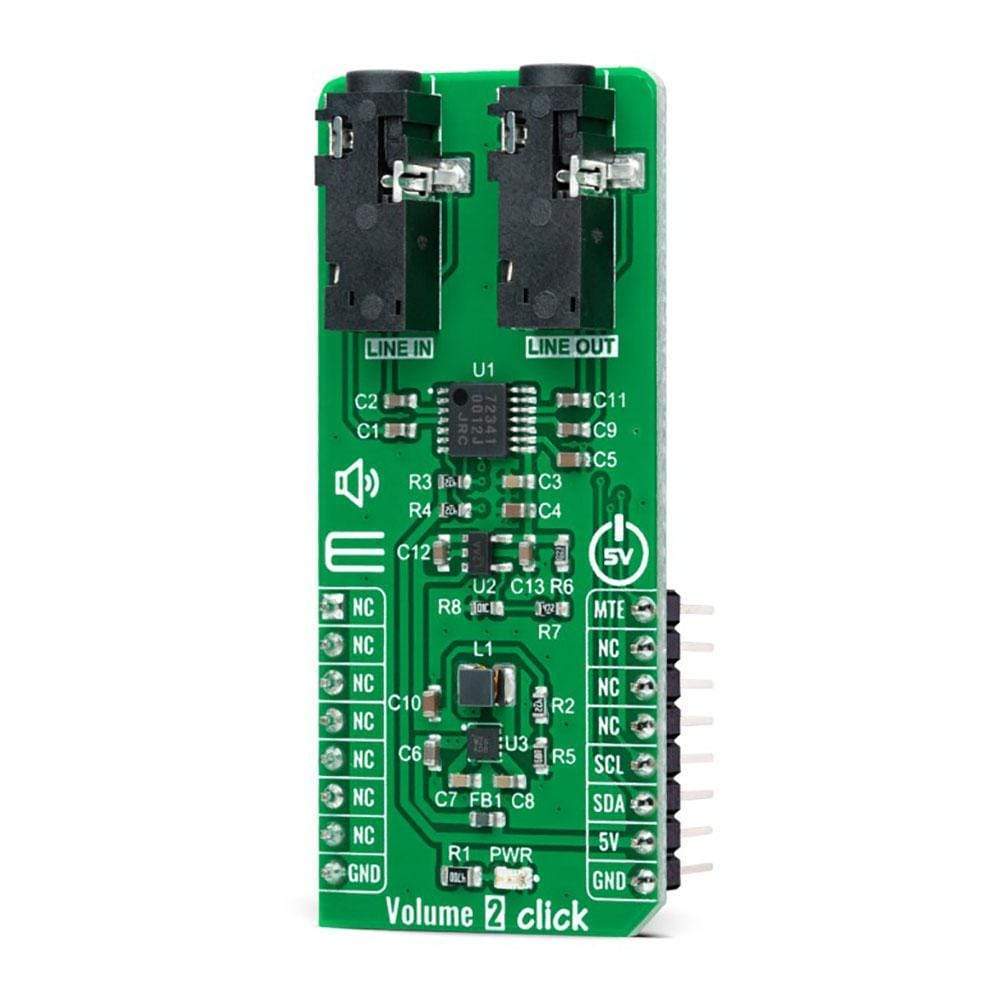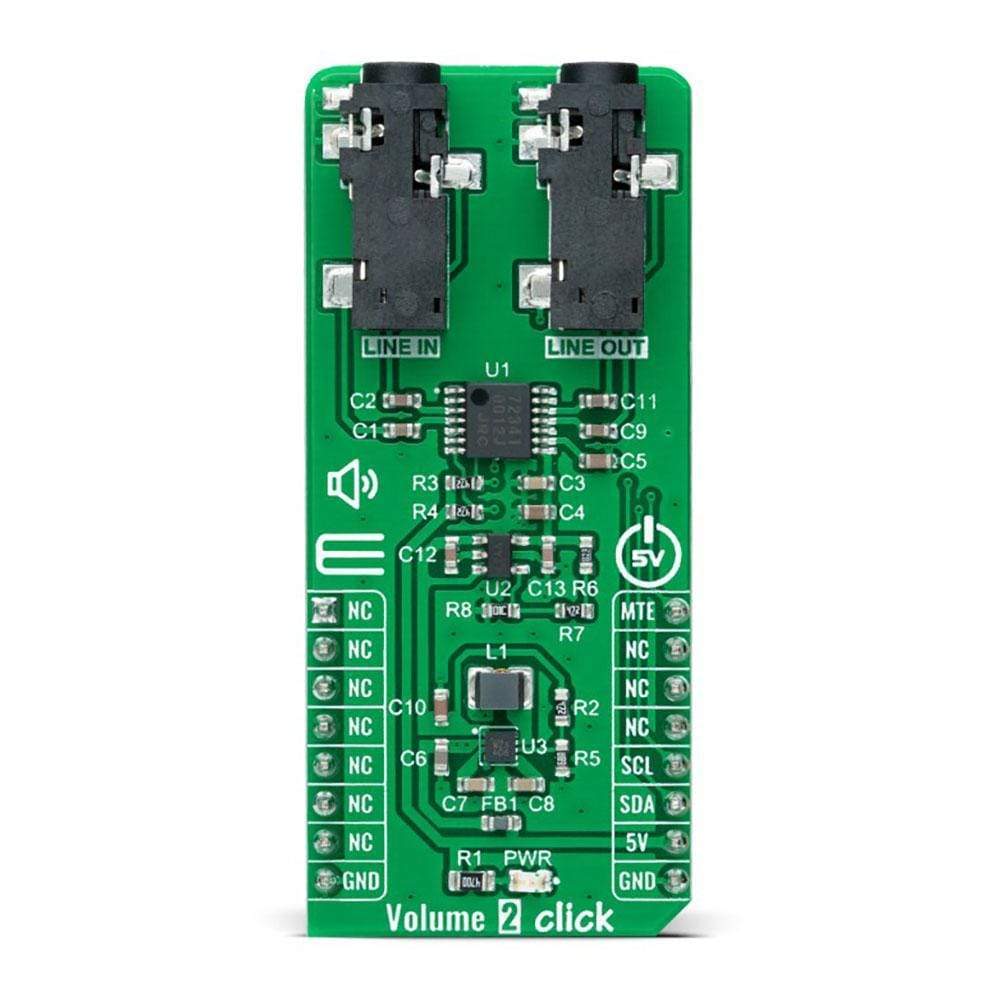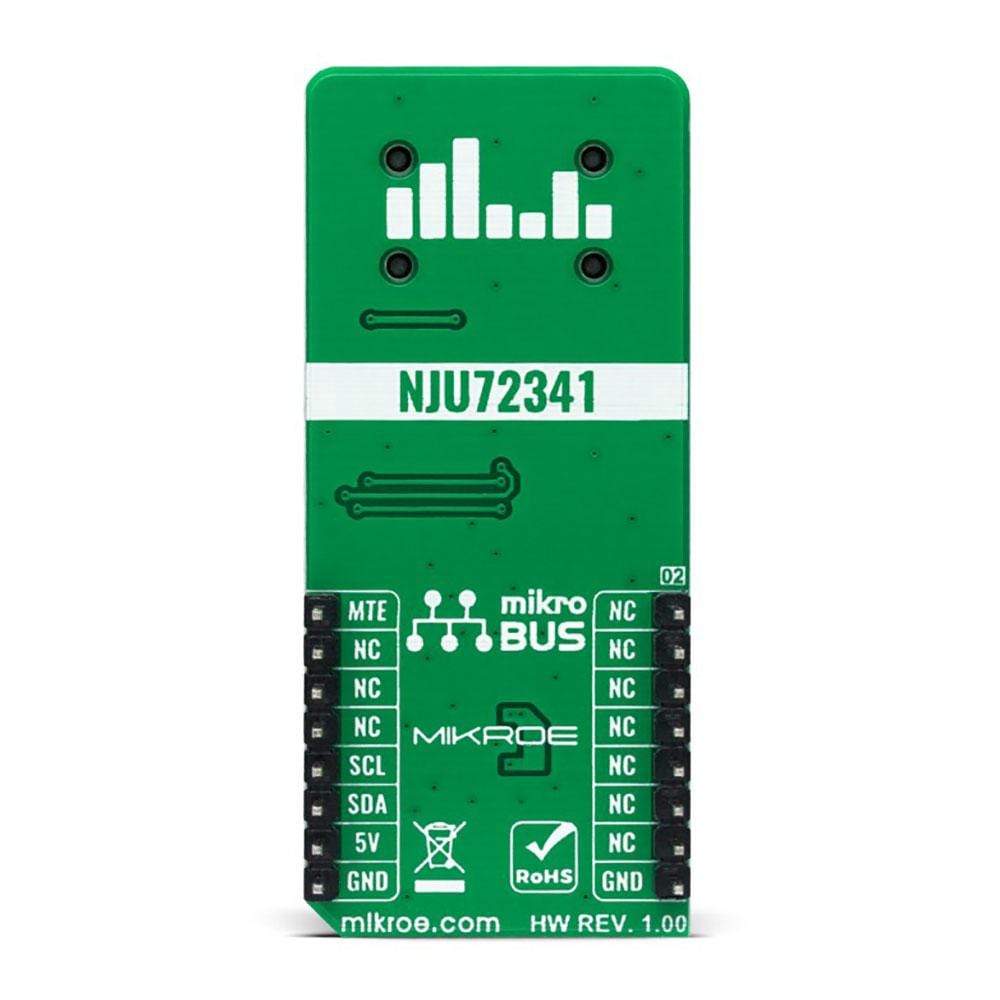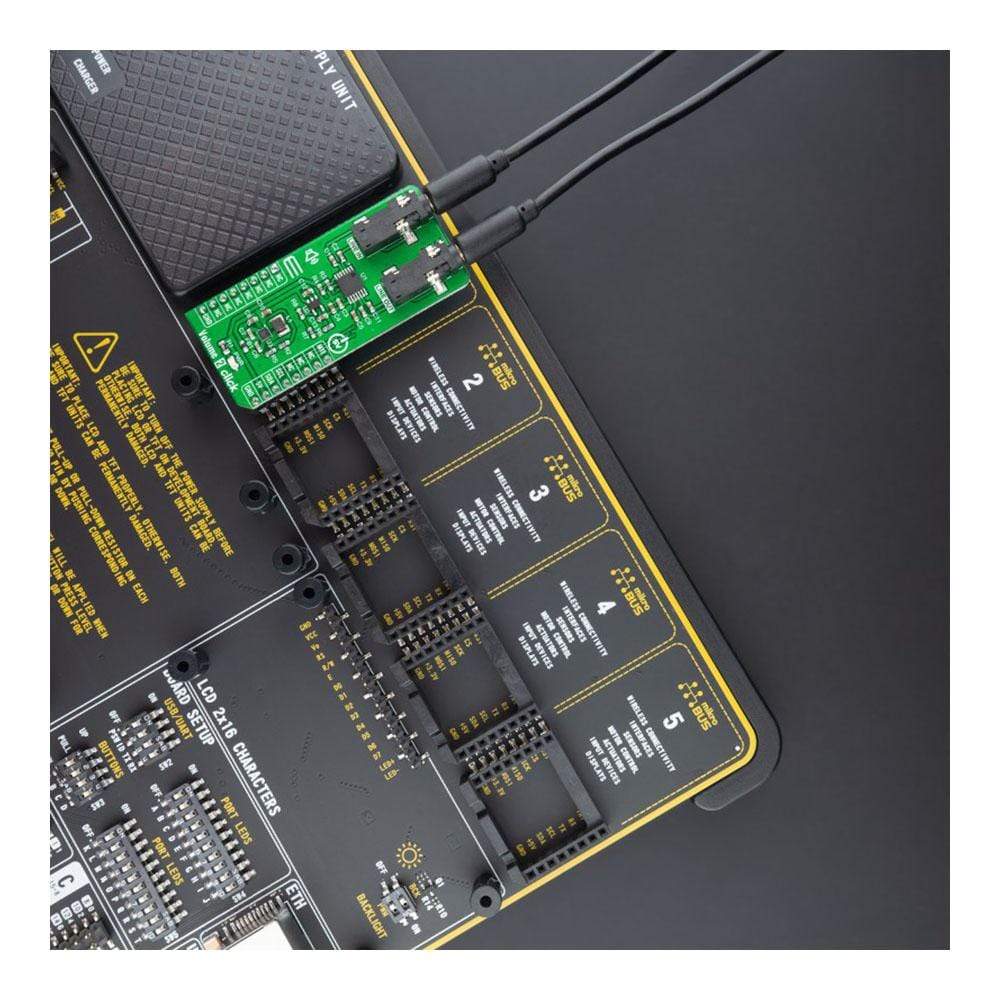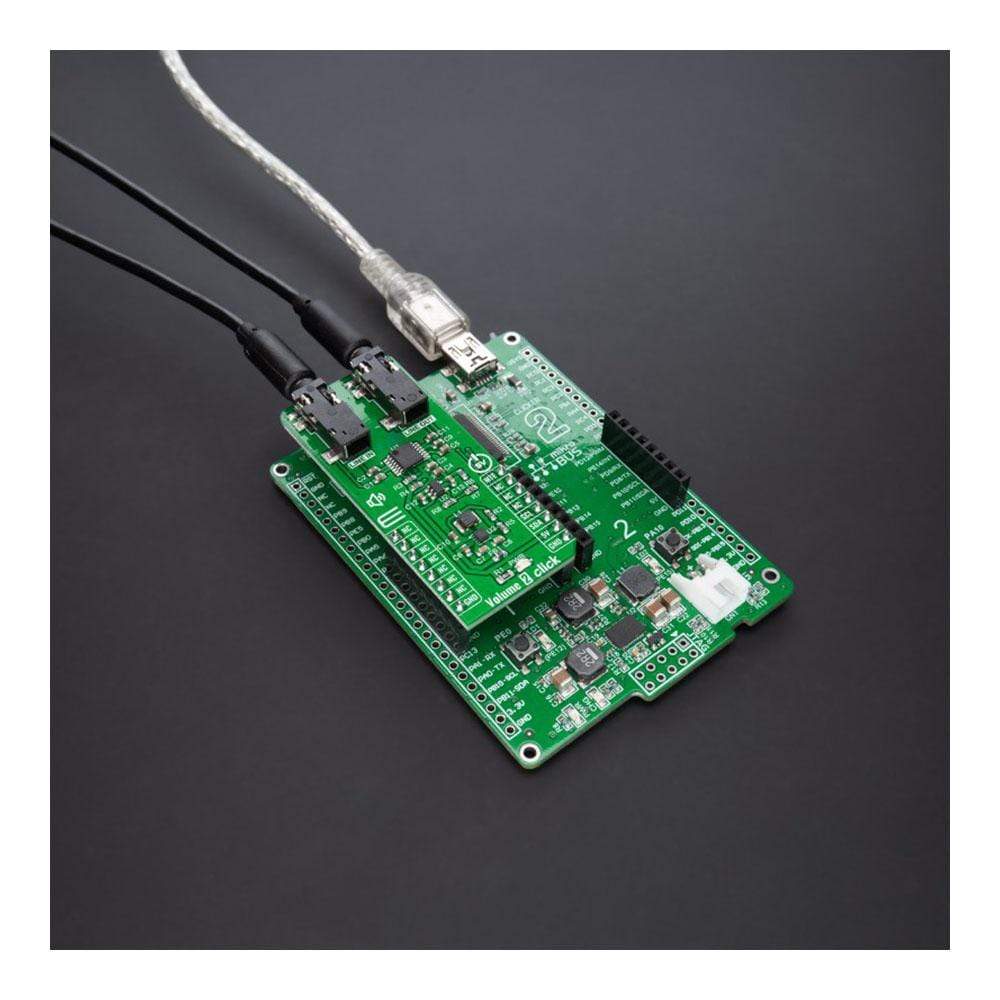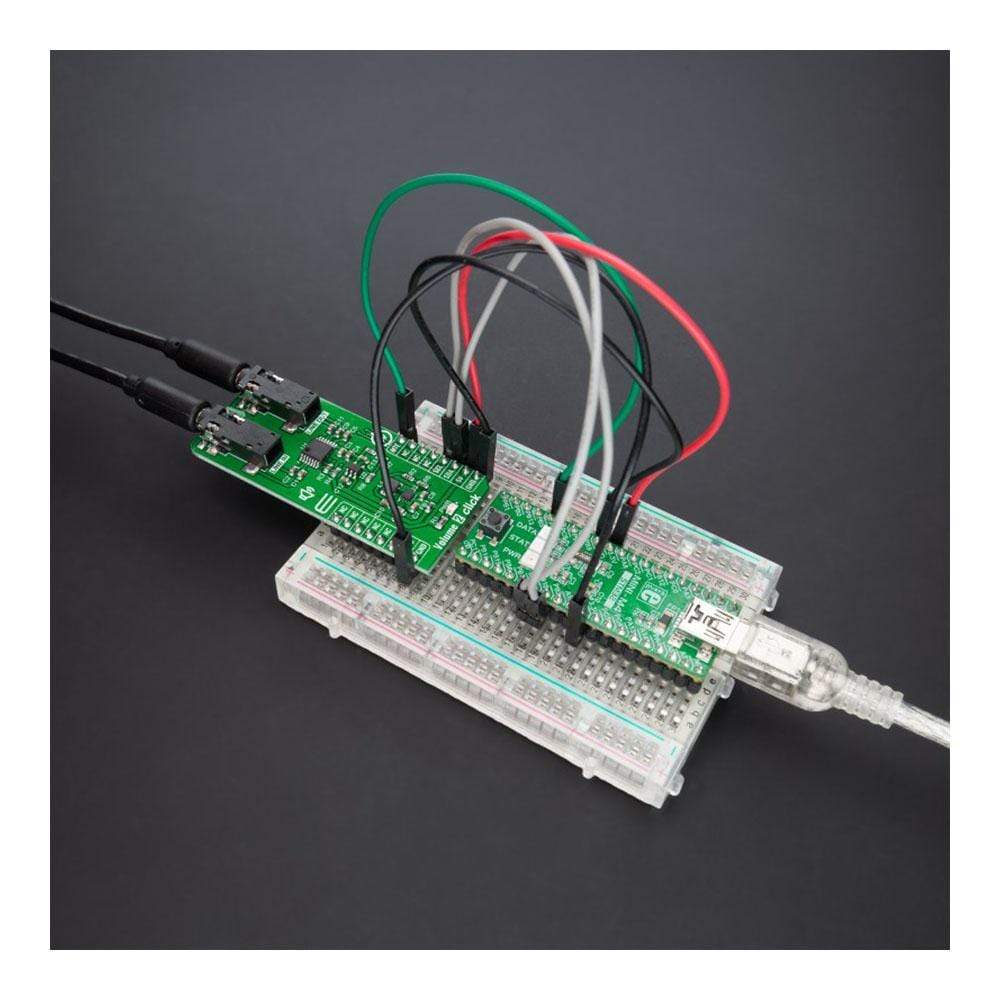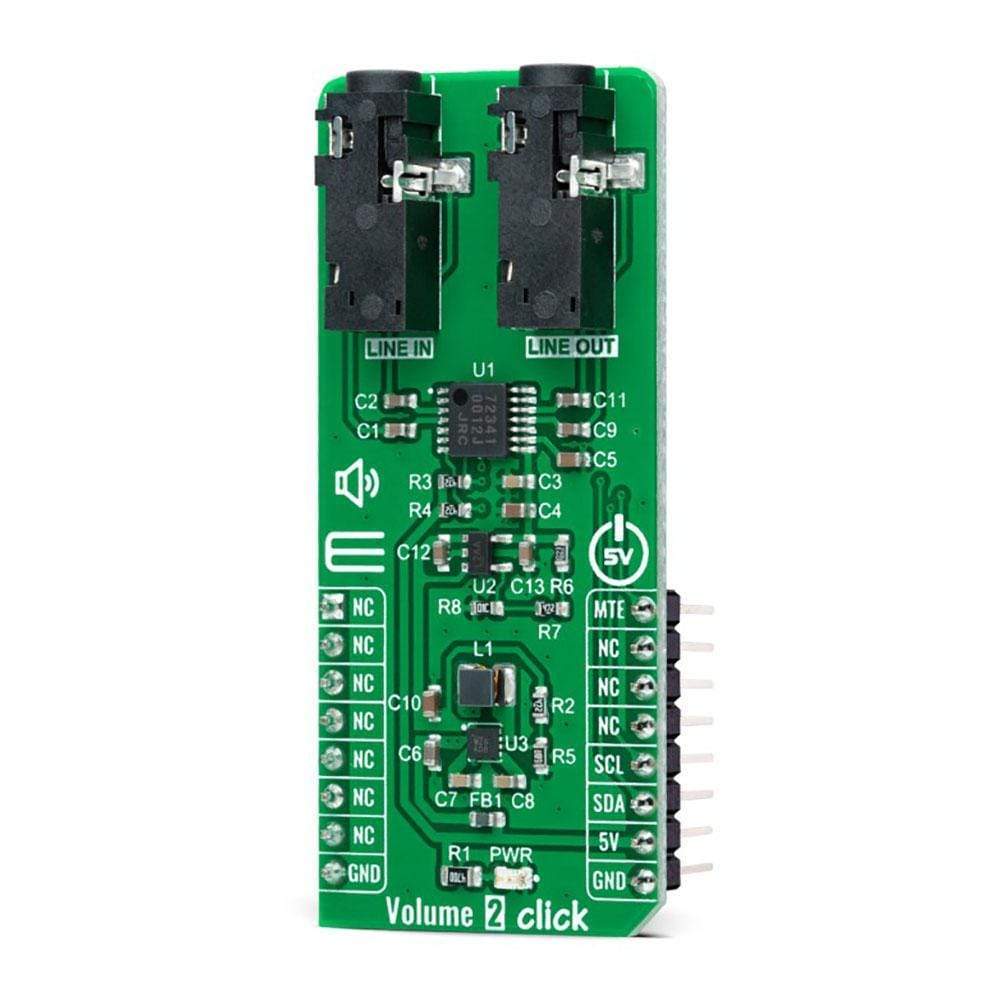
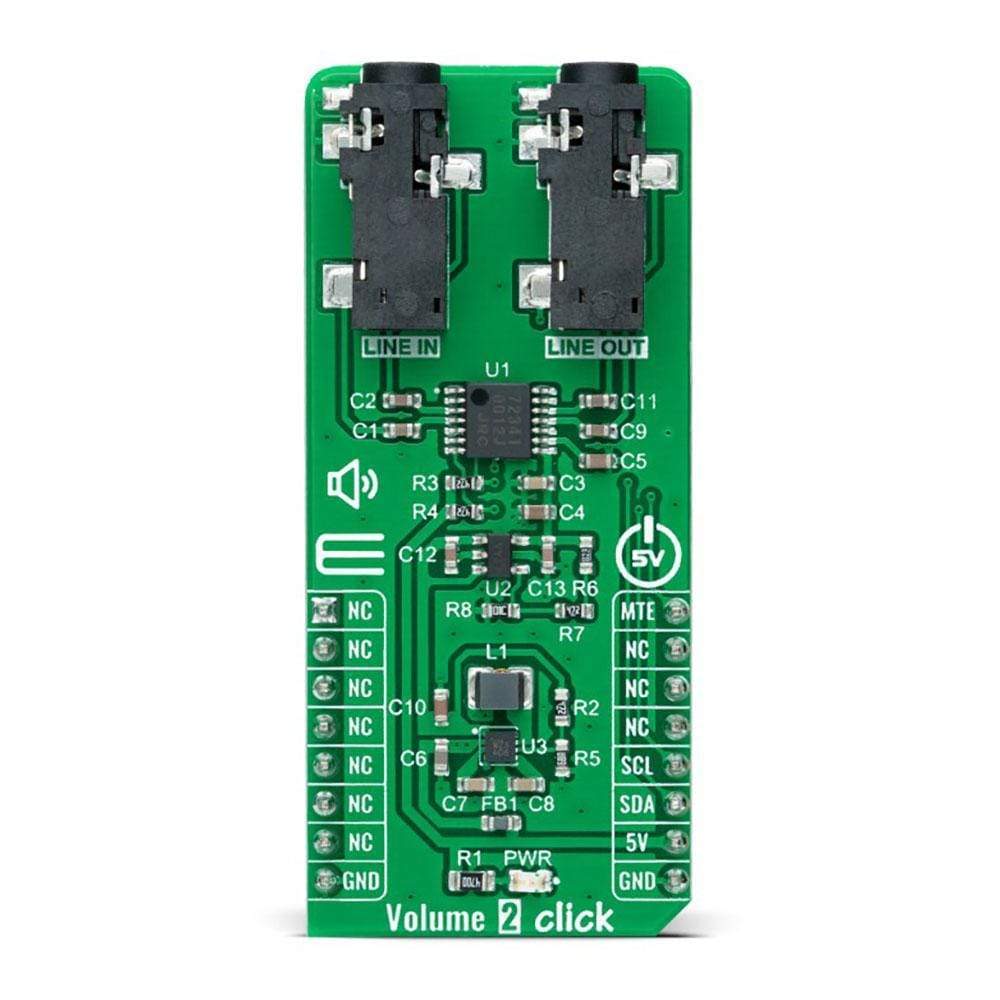
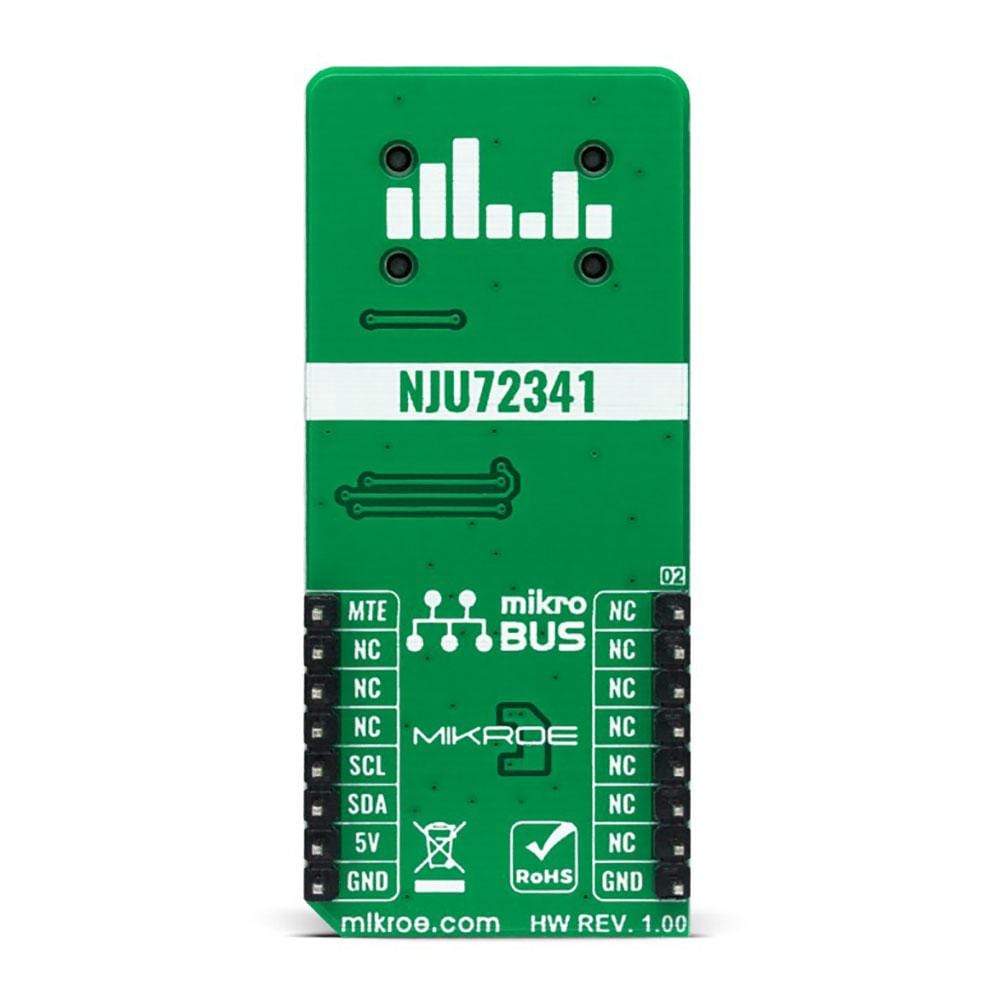
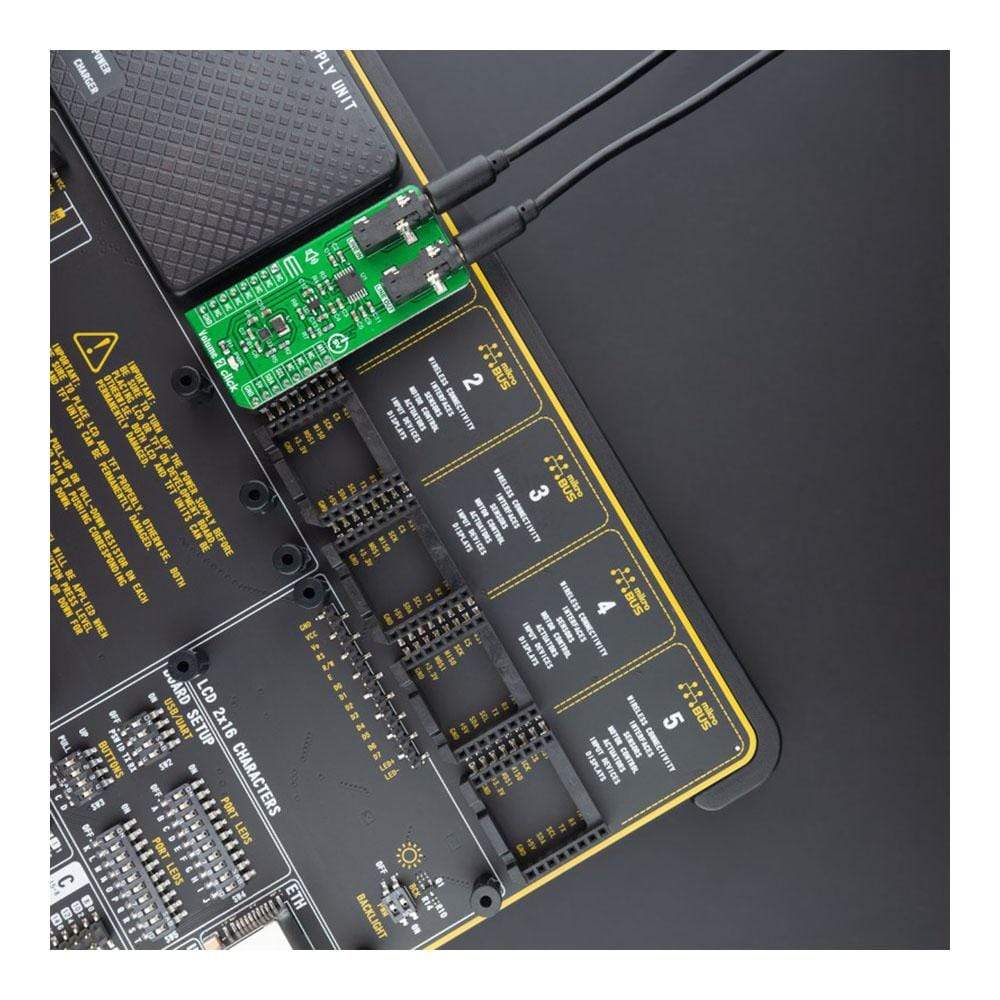
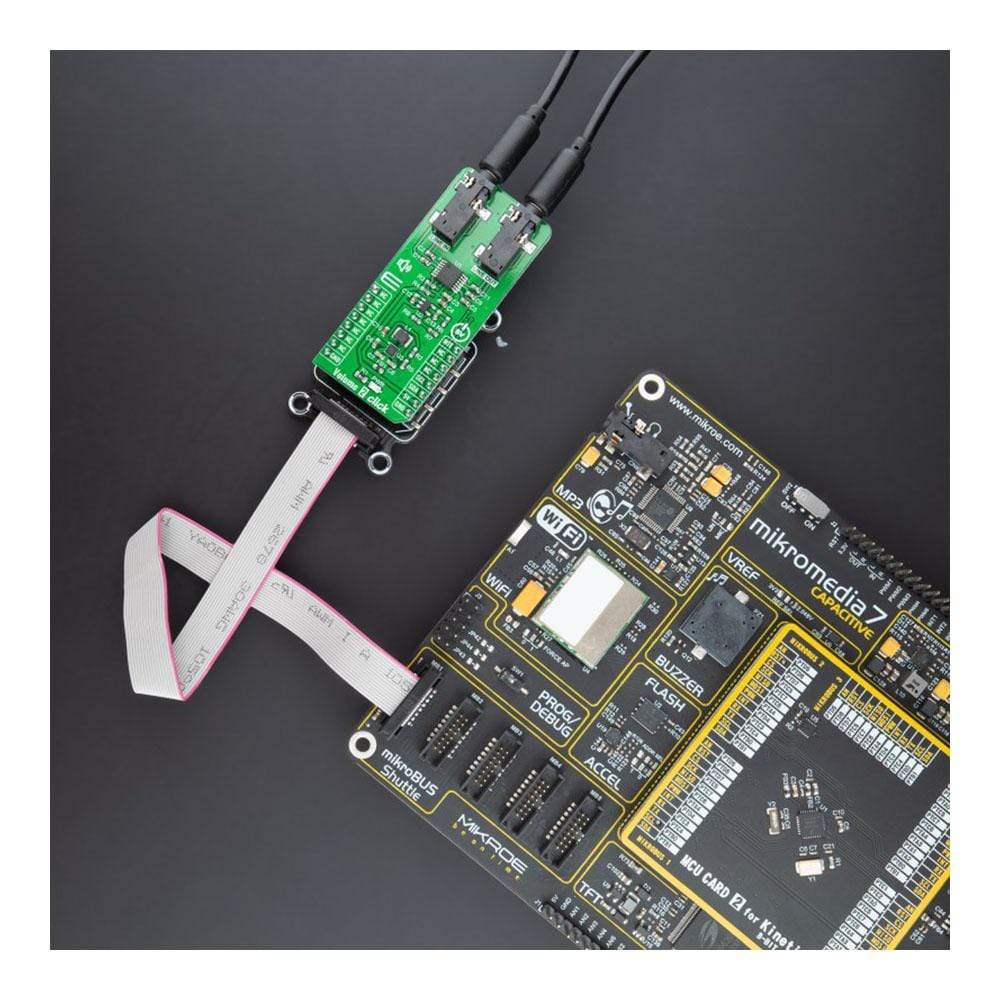
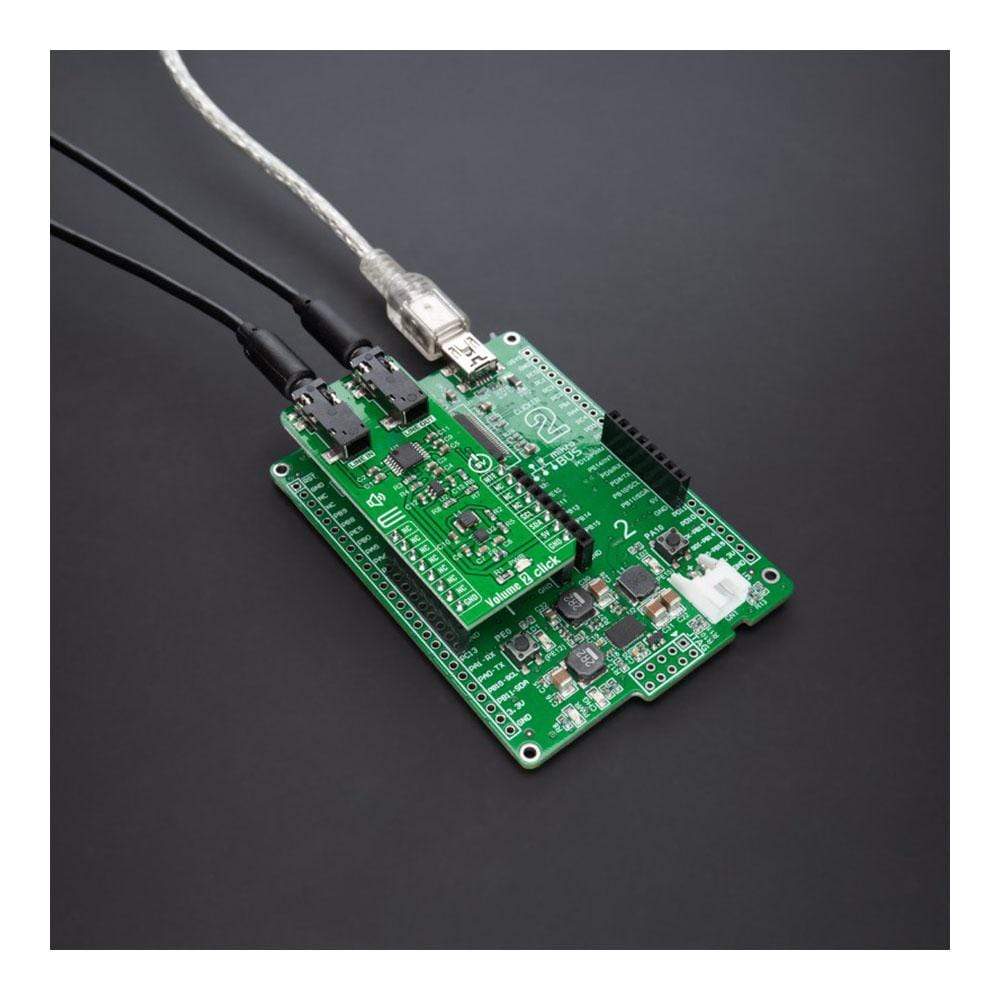
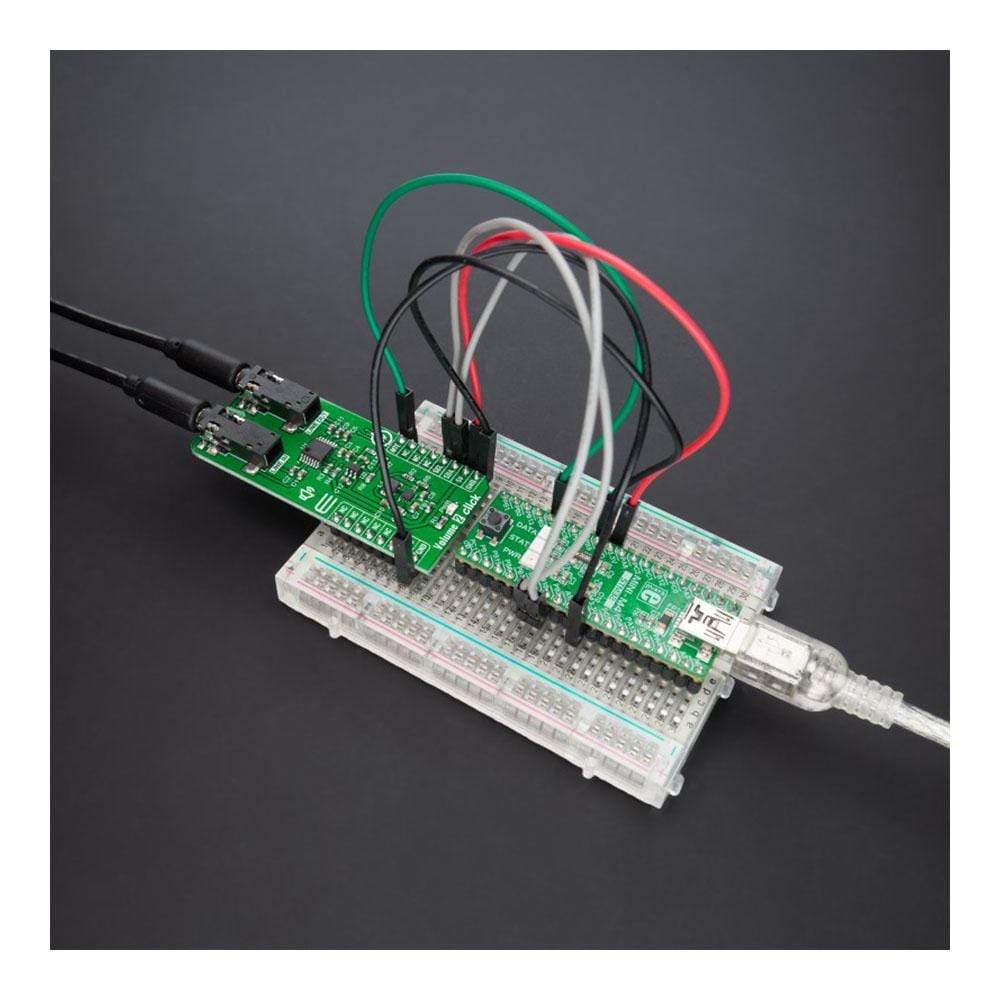
Overview
The Volume 2 Click Board™ is a compact add-on board that provides the user with complete digital volume control. This board features the NJU72341, a 2-channel I2C configurable electronic volume IC with external mute control from NJRC. It controls two independent low distortion audio channels with a vast volume control range from 0 to 95dB with a 1dB step offering zero-cross detection to protect pop noise. It operates with a simple I2C serial interface that accepts 8-bit data offering low distortion and noise. This Click Board™ is suitable for stereo and multi-channel audio systems and represents a perfect solution for remote audio volume control applications.
The Volume 2 Click Board™ is supported by a mikroSDK compliant library, which includes functions that simplify software development. This Click Board™ comes as a thoroughly tested product, ready to be used on a system equipped with the mikroBUS™ socket.
Downloads
Le Volume 2 Click Board™ est une carte complémentaire compacte qui offre à l'utilisateur un contrôle de volume numérique complet. Cette carte comprend le NJU72341, un circuit intégré de volume électronique configurable I2C à 2 canaux avec contrôle de sourdine externe de NJRC. Il contrôle deux canaux audio indépendants à faible distorsion avec une vaste plage de contrôle du volume de 0 à 95 dB avec un pas de 1 dB offrant une détection de passage par zéro pour protéger le bruit de pop. Il fonctionne avec une interface série I2C simple qui accepte les données 8 bits offrant une faible distorsion et un faible bruit. Ce Click Board™ convient aux systèmes audio stéréo et multicanaux et représente une solution parfaite pour les applications de contrôle du volume audio à distance.
Le Click Board™ du volume 2 est pris en charge par une bibliothèque compatible mikroSDK, qui comprend des fonctions qui simplifient le développement logiciel. Cette Click Board™ est un produit entièrement testé, prêt à être utilisé sur un système équipé du socket mikroBUS™.
| General Information | |
|---|---|
Part Number (SKU) |
MIKROE-4560
|
Manufacturer |
|
| Physical and Mechanical | |
Weight |
0.02 kg
|
| Other | |
Country of Origin |
|
HS Code Customs Tariff code
|
|
EAN |
8606027382086
|
Warranty |
|
Frequently Asked Questions
Have a Question?
Be the first to ask a question about this.

